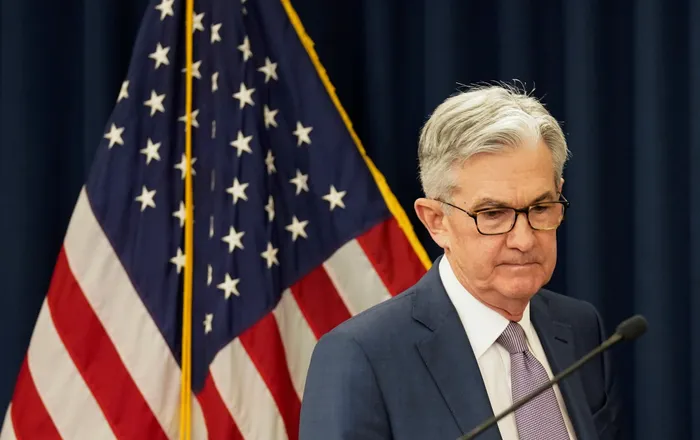Uncertainty over Fed’s next move leads to volatility on markets

Fed chairperson Jerome Powell announced earlier this month that interest rates were likely to have found their highest point in the current cycle.
It is now the third consecutive week where global equity, capital and exchange markets try to forecast what the mood of the US Federal Reserve through its Federal Open Market Commission (FOMC) is likely going to be at its latest meeting on interest rates on December 13.
As various US economic data are released, market sentiment seems to swing between bullish and bearish sentiment. The news on US data and on US inflation and retail sales last week illustrates this volatility and change in market sentiment.
The US October consumer price inflation (CPI) number indicates that both headline inflation and core inflation came down by more than expected. Annual headline inflation was 3.2%, down from the annual 3.7% rate in September, and lower than the 3.3% that was expected. Core inflation, that consists of headline inflation excluding the volatile food and energy prices, recorded 4.0% in October, only marginally lower than the 4.1% recorded during September.
The inflation rate, though decelerating for much of 2023, is still well above the Fed’s annual inflation target. This, still well above a level of 2.0% in the CPI, remains the most controversial economic indicator in financial markets.
The main reason seems to be the various opinions from the members of the FOMC. For instance, Fed chairperson Jerome Powell announced the previous week that interest rates were likely to have found their highest point in the current cycle.
On November 7, Fed Governor Michelle Bowman again said at a speech in Columbus, Ohio: “I continue to expect that we will need to increase the federal funds rate further to bring inflation down to our 2% target in a timely way.”
Markets, on the other hand, now expect the Fed is more likely to cut rates than raise them in 2024, yet Fed officials generally disagree with that view.
Retail sales in the US decreased by 0.1% month-over-month in October 2023, putting an end to a six-month streak of increases, therefore supporting the market that the end of the current interest rate cycle had been reached, especially after the US unemployment rate also turned around, rising towards 4.0%. These different opinions lead to volatile movements in share and bond prices on global markets.
On the JSE, equity markets followed this uncertainty. The index increased by 3407 points (4.7%) last Monday to Wednesday, decreased again by more than 1 000 points on Thursday (1.3%) and then again ended Friday up by 0.2%. The unexpected decrease in South Africa’s unemployment rate during quarter three of 2023 to 31.9%, down from 32.6% in quarter two and much lower than the 32.8% expected level, also helped equity markets. The All Share Index once again turned positive for the year by 1.2%
On the foreign exchange market, the rand exchange rate continues to improve. Against the US dollar, the currency appreciated by 35 cents to R18.39 on Friday, but traded at R18.19 to the dollar on Wednesday, after the better-than-expected unemployment rate was announced.
Another positive development towards some improvement in South African equities and the exchange rate is the continuous decrease in the international oil price.
The price for Brent oil ended Friday at $79.50 (R1 458) per barrel and was trading at one stage on $77.00. Together with the stronger rand, the petrol price last Thursday was over recovered by 107 cents per litre and that for diesel by 200 cents a litre.
On Wall Street in the US, the Dow Jones Industrial index improved by 1.73% last week and is now 5.43% higher for the year to date. The S&P500 index gained by 3.7% and is now more than 17.0% higher than at the beginning of the year. In the UK, the FTSE100 increased by 1.92% last week, The Stoxx Europe 600 traded higher by 1.0% and in China the Shanghai Composite index gained 0.5%.
This week, local markets will await the interest rate decision by the Monetary Policy Committee on Thursday. It is expected that the repo rate will not be changed and will remain at 8.25% and the prime overdraft rate on 11.75%.
The release of the Leading Business Cycle indicator for September on Wednesday will also be of interest. The indicator examines the direction in which real economic activity is moving, in real time. It is expected that the indicator turned negative to – 1.0% against the +0.4% recorded for August 2023.
Statistics SA will release the inflation rate for October on Wednesday. It is expected that the annual rate would have remained the same at 5.4% (year on year) as was recorded for September 2023.
On global markets, the main economic indicator that the market awaits is the US durable-goods orders for October that will be published on Wednesday. The usual weekly jobless claims in the US and US gas and oil reserves data will also draw attention.

Chris Harmse is the consulting economist of Sequoia Capital Management.
BUSINESS REPORT